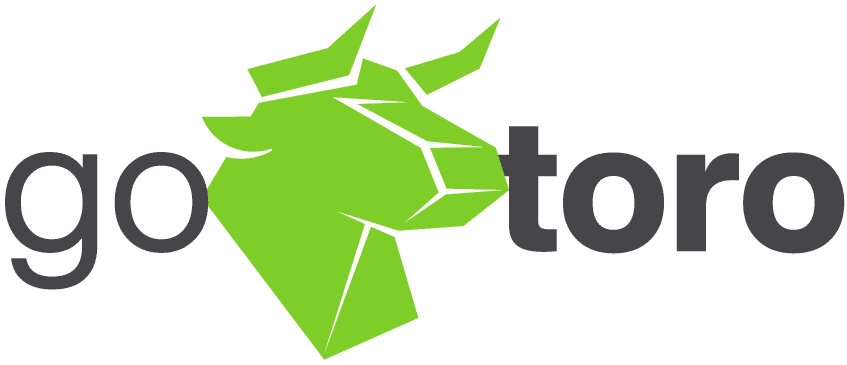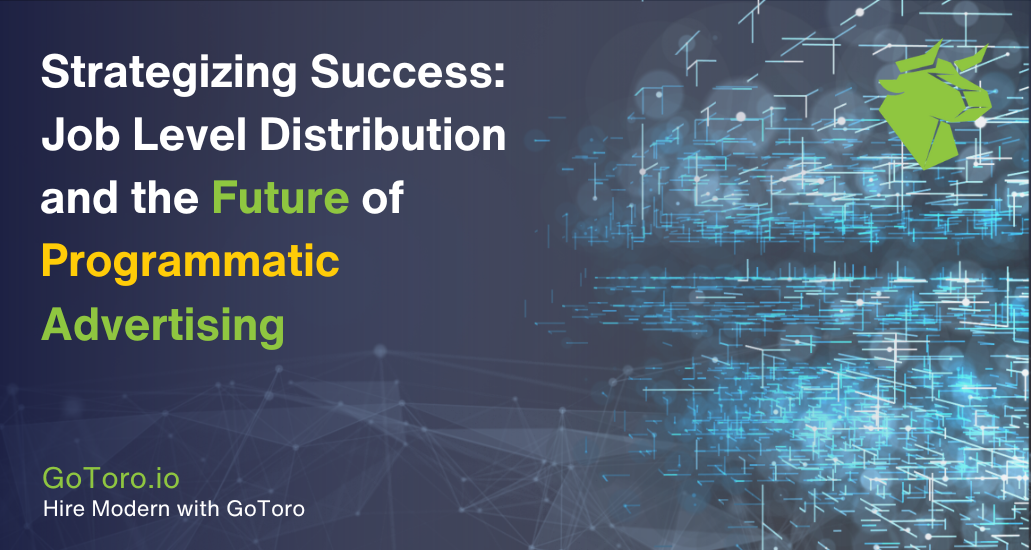Brief Overview of Programmatic Advertising
In the ever-evolving digital job advertsing landscape, programmatic recruitment advertising has emerged as a cornerstone of modern recruitment strategies. By automating the buying and selling of digital advertising, programmatic technology leverages advanced algorithms and real-time data to deliver highly targeted and efficient ad placements. This method streamlines the talent aquistion process, reduces costs, and enhances the precision of recruitment campaigns, making it indispensable for businesses aiming to find quality employees.
Importance of Strategizing for Success in the Programmatic Space
As the future of programmatic advertising continues to unfold, it’s crucial for businesses to develop a comprehensive recruitment strategy that addresses all of the recent technological advancements. Effective strategizing ensures that companies can navigate the complexities of digital advertising, optimize their ad spend, and achieve their hiring objectives. Understanding and leveraging job level distribution within the programmatic space is a vital component of this strategy, enabling organizations to build robust teams that can drive success.
What is Job Level Distribution Within the Programmatic Space?
Definition of Job Level Distribution
Job level distribution refers to the allocation of various roles and responsibilities across different levels within an organization. In the context of programmatic advertising, this involves categorizing positions from entry-level to executive roles, ensuring a balanced and efficient workforce. Each level plays a unique and essential role in the overall success of programmatic campaigns, from data analysis and campaign management to strategic oversight and innovation.
Overview of Different Job Levels in Programmatic Advertising
Programmatic advertising encompasses a diverse range of job levels, each contributing uniquely to the process:
- Entry-Level Positions focus on data collection, basic analysis, and supporting senior team members in campaign execution. Examples include programmatic analysts and junior campaign managers.
- Mid-Level Positions handle more complex data analysis, campaign strategy, and optimization. This includes senior campaign managers and programmatic specialists.
- Senior-Level Positions are responsible for high-level strategy, overseeing large-scale campaigns, and managing cross-functional teams. Roles include programmatic directors and lead strategists.
- Executive Positions set the overall vision for programmatic advertising within the company, making strategic decisions that align with broader business goals. Examples include Chief Marketing Officers (CMOs) and other executive roles.
Importance of Understanding Job Level Distribution
Grasping the concept of job level distribution is crucial for organizations aiming to thrive in the future of programmatic advertising. A well-structured job level distribution ensures that each aspect of a programmatic campaign is handled by skilled professionals who can leverage their expertise to drive results. It also facilitates clear communication and effective collaboration across different levels, leading to more cohesive and successful advertising strategies.
The Importance of Job Level Distribution
How Job Level Distribution Impacts Organizational Structure
The impact of job level distribution on organizational structure cannot be overstated. A balanced distribution ensures that tasks are appropriately delegated, preventing bottlenecks and enhancing efficiency. It allows for a clear hierarchy and accountability, ensuring that each team member knows their responsibilities and how they contribute to the overall goals. This structure is particularly important in the dynamic and fast-paced environment of programmatic advertising, where quick decision-making and adaptability are key.
Benefits of a Balanced Job Level Distribution
A balanced job level distribution offers numerous benefits, including:
- Enhanced Collaboration involves clear roles and responsibilities, facilitating better teamwork and collaboration across different levels.
- Improved Efficiency comes from task delegation, ensuring that each team member can focus on their area of expertise, increasing overall efficiency.
- Scalability is achieved with a well-structured team, making it easier to scale operations to meet growing demands.
- Employee Development is supported by providing clear career paths and opportunities for advancement, helping retain talent and foster professional growth.
Understanding and implementing a balanced job level distribution is essential for companies looking to capitalize on the future of programmatic advertising. It ensures that organizations are well-equipped to handle the complexities of programmatic campaigns and can adapt to the evolving digital landscape.
Why AI Thrives with Human Touch in the Future of Programmatic Advertising

The Role of AI in Programmatic Advertising
In the future of programmatic advertising, AI plays a crucial role by transforming how ads are bought, sold, and optimized. AI leverages complex algorithms to analyze vast amounts of data, enabling more precise targeting and efficient ad spend. The integration of AI in programmatic advertising brings several benefits that significantly enhance the effectiveness of campaigns.
Data-Driven Insights
AI excels in processing large datasets quickly and accurately. It identifies patterns and trends that human analysts might overlook, providing valuable insights into consumer behavior. These data-driven insights allow marketers to make informed decisions, optimize their campaigns in real-time, and achieve better results.
Automation Capabilities
Automation is another key advantage of AI in the future of programmatic advertising. AI-driven automation streamlines various processes, from bidding on ad spaces to adjusting campaign parameters based on performance. This not only saves time but also reduces the likelihood of human error, ensuring campaigns run smoothly and efficiently.
The Necessity of Human Intervention
Despite the impressive capabilities of AI, human intervention remains essential in the future of programmatic advertising. AI can analyze data and automate tasks, but it lacks the ability to understand context and make nuanced decisions. Human input is necessary to interpret AI-generated insights and apply them strategically.
Nuanced Decision-Making
Humans excel at making decisions that require a deep understanding of context and subtle nuances. In programmatic advertising, this means understanding the brand’s voice, audience preferences, and market dynamics. Human intervention ensures that AI-driven campaigns are not only data-driven but also contextually relevant and aligned with broader marketing goals.
Contextual Understanding
While AI can process data, it cannot fully grasp the complexities of human behavior and emotions. Human marketers bring contextual understanding to the table, interpreting data within the larger framework of cultural, social, and psychological factors. This ensures that advertising messages resonate with audiences on a deeper level.
Complementary Strengths of AI and Humans
The future of programmatic advertising will be shaped by the complementary strengths of AI and humans. By leveraging both AI’s analytical prowess and human creativity, empathy, and strategic thinking, organizations can create more effective and engaging campaigns.
Creativity
Humans bring creativity to programmatic advertising, developing innovative concepts and compelling narratives that capture audience attention. While AI can optimize ad placements, it is the creative input from humans that makes ads memorable and impactful.
Empathy
Empathy is another critical strength that humans bring to the future of programmatic advertising. Understanding and addressing audience emotions and needs create more authentic connections. Human marketers can craft messages that resonate on an emotional level, fostering loyalty and engagement.
Strategic Thinking
Strategic thinking involves considering long-term goals and broader market trends. Human marketers can devise comprehensive strategies that align with the company’s vision and objectives. By integrating AI-driven insights with human strategic thinking, organizations can navigate the complexities of the advertising landscape more effectively.
Adapting to Evolving Technologies in the Future of Programmatic Advertising

Overview of Advancements in AI, Machine Learning, and Data Analytics in Programmatic Advertising
The future of programmatic advertising is closely tied to advancements in AI, machine learning, and data analytics. These technologies are continuously evolving, offering new capabilities and opportunities for marketers. From more sophisticated targeting algorithms to advanced predictive analytics, the tools available to advertisers are becoming increasingly powerful and precise.
Importance of Adapting to New Technologies
As the landscape of programmatic advertising evolves, it is crucial for businesses to adapt to new technologies. Staying updated on the latest advancements ensures that organizations can leverage cutting-edge tools to enhance their campaigns. Adapting to new technologies also enables companies to stay competitive and meet the ever-changing demands of the market.
Staying Updated on Emerging Trends
Keeping up with emerging trends is vital for success in the future of programmatic advertising. Marketers must stay informed about the latest developments in AI, machine learning, and data analytics. This includes attending industry conferences, participating in webinars, and engaging with thought leaders. By staying updated, businesses can anticipate changes and adjust their strategies accordingly.
Refining Strategies Based on Changing Consumer Behaviors
Consumer behaviors are constantly evolving, influenced by technological advancements and societal shifts. To stay relevant, businesses must continuously refine their strategies based on these changes. This involves analyzing consumer data, understanding new preferences, and tailoring campaigns to meet the needs and expectations of the audience.
Investing in Continuous Learning and Development for Employees
The future of programmatic advertising depends on a well-trained and adaptable workforce. Investing in continuous learning and development ensures that employees remain proficient in the latest technologies and methodologies. This not only enhances individual performance but also drives overall organizational success.
Importance of Training and Upskilling
Training and upskilling are critical components of adapting to the future of programmatic advertising. Providing employees with opportunities to learn new skills and deepen their expertise ensures that they can effectively leverage new tools and techniques. This can include formal training programs, online courses, and on-the-job learning experiences.
Resources and Strategies for Continuous Learning
To support continuous learning, organizations can implement various resources and strategies. Offering access to industry publications, encouraging participation in professional networks, and providing mentorship programs are all effective ways to promote ongoing development. Additionally, fostering a culture of curiosity and innovation encourages employees to seek out new knowledge and stay ahead of industry trends.
By embracing advancements in technology and prioritizing continuous learning, businesses can navigate the future of programmatic advertising with confidence and agility.
Embracing Innovation and Agility in the Future of Programmatic Advertising
Strategies for Staying Ahead of the Curve
To thrive in the future of programmatic advertising, businesses must adopt strategies that keep them ahead of the curve. This involves continuously monitoring industry trends, experimenting with new technologies, and being open to change. Companies that are proactive in their approach can better anticipate market shifts and adjust their strategies accordingly, ensuring sustained success.
Embracing Innovation
Innovation is a cornerstone of success in the future of programmatic advertising. Businesses should foster a culture of creativity and experimentation, encouraging employees to explore new ideas and approaches. This can involve investing in research and development, partnering with technology startups, and participating in industry forums to stay updated on the latest innovations. By embracing innovation, companies can develop cutting-edge campaigns that resonate with their target audiences.
Maintaining Agility in Business Practices
Agility is essential for navigating the fast-paced environment of programmatic advertising. Organizations must be able to quickly adapt to changes in technology, consumer behavior, and market conditions. This requires flexible business practices and a willingness to pivot when necessary. Implementing agile methodologies, such as iterative testing and rapid prototyping, can help businesses stay responsive and make data-driven decisions that enhance campaign performance.
Capitalizing on Opportunities in the Dynamic Landscape of Programmatic Advertising
The dynamic landscape of programmatic advertising offers numerous opportunities for growth and success. By staying informed about emerging trends and technologies, businesses can identify and capitalize on new opportunities. This might involve exploring new advertising platforms, targeting untapped audiences, or leveraging data analytics to uncover insights that drive strategic decisions. Companies that can effectively capitalize on these opportunities will be well-positioned to succeed in the future of programmatic advertising.
Maintaining a Competitive Edge
Maintaining a competitive edge in the future of programmatic advertising requires continuous improvement and innovation. Businesses should regularly assess their performance, seek feedback from stakeholders, and implement best practices to enhance their operations. Staying ahead of competitors also involves investing in employee development, ensuring that teams have the skills and knowledge needed to leverage new technologies and methodologies. By maintaining a focus on excellence and continuous growth, companies can secure their place as leaders in the programmatic advertising industry.
Measuring Success in Programmatic Advertising

Key Performance Indicators (KPIs) to Track Success
Measuring success in the future of programmatic advertising involves tracking key performance indicators (KPIs) that reflect the effectiveness of campaigns. Important KPIs include click-through rates (CTR), conversion rates, return on ad spend (ROAS), and cost per acquisition (CPA). By monitoring these metrics, businesses can assess the impact of their campaigns and identify areas for improvement.
Tools and Technologies for Measuring Effectiveness
Several tools and technologies are available to help businesses measure the effectiveness of their programmatic advertising campaigns. Analytics platforms, such as Google Analytics and Adobe Analytics, provide detailed insights into campaign performance and user behavior. Additionally, programmatic advertising platforms often include built-in reporting features that allow marketers to track KPIs in real time. Leveraging these tools enables businesses to make data-driven decisions and optimize their campaigns for better results.
Examples of Successful Measurement Frameworks
Successful measurement frameworks in programmatic advertising are built on a foundation of clear objectives and relevant KPIs. For example, a company might set a goal to hire 20% more staff over six months. They would track KPIs such as the number of applicants, the time to hire, and the quality of hires to measure progress. Regularly reviewing and adjusting the framework based on performance data ensures that the company remains on track to achieve its goals.
Another example could be a brand awareness campaign for a new product launch. The company might focus on KPIs like reach, frequency, and engagement rates. Using tools like social media analytics and programmatic platform reports, they can measure how effectively their ads are reaching and resonating with the target audience. By continuously refining their approach based on these insights, they can maximize the impact of their campaign.
Measuring success in the future of programmatic advertising requires a strategic approach and the right tools. By identifying relevant KPIs, leveraging advanced analytics platforms, and implementing effective measurement frameworks, businesses can optimize their campaigns and achieve their marketing objectives.
The Future of Programmatic Advertising
Predictions and Trends for the Future
As we look toward the future of programmatic advertising, several key trends and predictions emerge. One significant trend is the increasing reliance on artificial intelligence (AI) and machine learning to optimize ad placements and enhance targeting precision. These technologies will continue to evolve, providing more sophisticated tools for analyzing consumer behavior and delivering personalized ad experiences.
Another trend is the growing importance of data privacy and ethical considerations. With heightened awareness and regulation around data usage, advertisers must prioritize transparency and compliance to maintain consumer trust. Additionally, the integration of omnichannel strategies will become more prevalent, allowing advertisers to create seamless experiences across various platforms and devices.
How Emerging Technologies Will Shape the Industry
Emerging technologies will play a pivotal role in shaping the future of programmatic advertising. AI and machine learning will enable more accurate predictive analytics, helping advertisers anticipate consumer needs and behaviors. Blockchain technology has the potential to enhance transparency and security in ad transactions, reducing fraud and building trust between parties.
Augmented reality (AR) and virtual reality (VR) will open new avenues for immersive advertising experiences, allowing brands to engage with consumers in innovative ways. Furthermore, advancements in natural language processing (NLP) will improve the effectiveness of conversational ads and chatbots, creating more interactive and engaging ad formats.
Preparing for Future Changes and Staying Ahead
To stay ahead in the future of programmatic advertising, businesses must adopt a proactive approach to change. This involves continuously monitoring industry developments and being open to adopting new technologies. Investing in employee training and development is crucial to ensure that teams have the skills needed to leverage these advancements effectively.
Organizations should also foster a culture of innovation, encouraging experimentation and the exploration of new ideas. Collaborating with technology partners and participating in industry forums can provide valuable insights and help businesses stay at the forefront of trends. By remaining agile and adaptable, companies can navigate the evolving landscape and capitalize on emerging opportunities.
Recap of the Importance of Job Level Distribution, AI and Human Collaboration, and Adapting to Evolving Technologies
In the future of programmatic advertising, success hinges on several critical factors. Understanding and optimizing job level distribution ensures that organizations have the right mix of skills and expertise to execute effective campaigns. The collaboration between AI and human intelligence leverages the strengths of both, combining data-driven insights with creativity and strategic thinking. Adapting to evolving technologies and staying informed about industry trends are essential for maintaining a competitive edge and achieving long-term success.
Strategizing for Success in the Future of Programmatic Advertising
Strategizing for success in the future of programmatic advertising requires a comprehensive approach that integrates technological advancements, human expertise, and continuous learning. By fostering innovation, maintaining agility, and prioritizing diversity and inclusion, businesses can build robust teams capable of navigating the complexities of the advertising landscape. Embracing change and staying proactive will position organizations to thrive in the dynamic and rapidly evolving world of programmatic advertising.
Ready to elevate your programmatic advertising strategy? Discover how Gotoro can help you stay ahead in the future of programmatic advertising. Request a demo today to see our cutting-edge solutions in action and learn how we can support your business in achieving its advertising goals.


